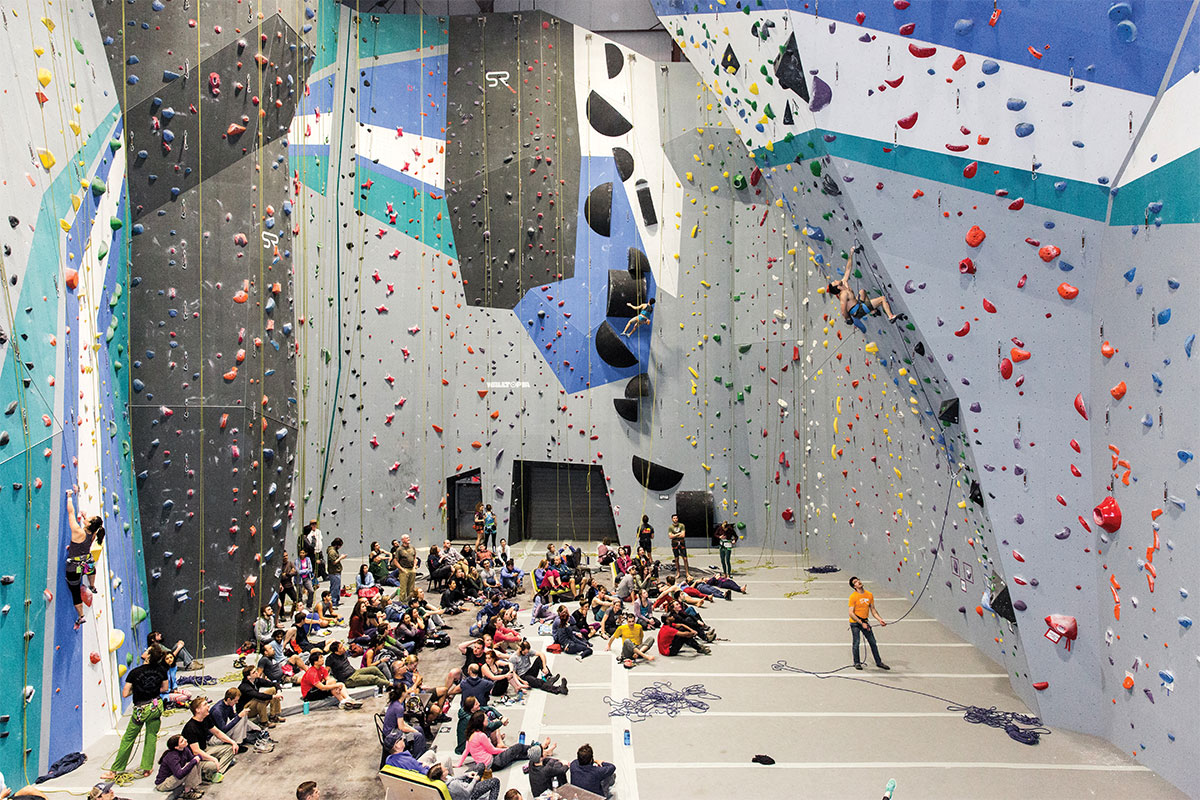Once a niche hobby for the athletic and outdoorsy, rock climbing’s popularity has skyrocketed in recent years, even landing a place in the 2021 Tokyo Olympics. There are good reasons for the sport’s popularity: Rock climbing is engaging both physically and mentally and cultivates a strong sense of community well-suited to meeting new people.
From an outside perspective, though, it can be intimidating: the ropes, the heights, the courses. So how do you actually get off the ground to get started?
First, disregard the notion that climbing is only for a certain type of person. Jeffrey Shor, director of marketing at Sportrock Climbing Centers, says that climbing can be a beginner-friendly sport. Regardless of experience or fitness level, you’re likely able to get started.
“Climbing is for everyone. If you can climb a ladder, you can go rock climbing,” Shor says. “I would really stress for people not to be concerned by what they think are their physical limitations, but to just come in and try.”
Why Do It?
Rock climbing, both indoor and outdoor, can be a useful tool for exercising both body and mind. In addition to the physical benefits that come from learning to climb, it also presents a mental challenge where the climber is constantly evaluating what the best route is to get to the top.
“When you are climbing, you’re problem solving. It’s like a kinetic puzzle that you solve with your body,” Shor says.
This also creates a more social element to the activity. Climbing gyms are often very collaborative, friendly spaces where climbers will work together to “solve” a route.
Know the Basics
To really understand how climbing works, start by signing up for an introductory class at a climbing gym. Gyms will often offer a class for absolute beginners, where they’ll cover the basics of how to climb, how to use the equipment, and give a tour of their facilities.
There are a few different types of climbing, but the main ones offered in climbing gyms are rope climbing and bouldering. With rope climbing, as the name suggests, climbers will use a harness and ropes as they climb, which will support them if they fall. This can be done either with a partner to belay for them, or with an auto-belay device to climb solo.
Bouldering, in comparison, is more of a free climb, with no ropes or harness. As a result, bouldering climbs tend to be lower to the ground and can be more accessible, Shor says, as they require less equipment and can easily be done without a partner.
If you’re interested in climbing outside rather than in a gym, you can do that, too. Shor says that many climbing gyms offer classes that go over the basics of climbing in an outdoor setting, no experience required.
The Equipment
You don’t need to worry about the equipment, either. The type of climbing you do will determine how much equipment is involved — bouldering has very little, while rope climbing comes with more moving parts —but gyms will have necessary materials like climbing shoes, ropes, and harnesses available to rent for a low cost. Then, if you take it up as a more consistent hobby, you can investigate purchasing your own equipment later.
But when you’re first getting started, all you’ll really need to bring is non-restrictive clothing, closed-toed athletic shoes, and an open mind.
For more stories like this, subscribe to Northern Virginia Magazine’s Health newsletter.



